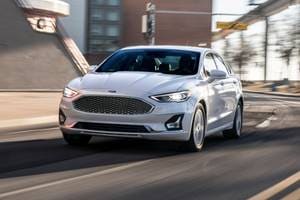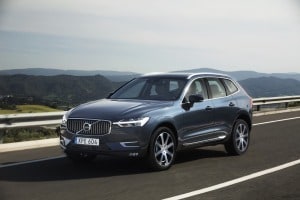Know Before You Buy
What Is an SUV?
We use SUV, or sport-utility vehicle, generically, defining it as anything with a tall body, a hatchback and an elevated ride height. You will often hear the term "crossover" used, but this is really just a marketing term to describe a utility vehicle based on a car platform rather than one based on a truck platform. As such, with increasingly rare exception, the terms "crossover" and "SUV" are often interchangeable.
Car-Based vs. Truck-Based
Car-based SUVs (also known as crossovers) usually provide attributes associated with cars, like sharper handling, better fuel economy, a quieter and more comfortable ride and more interior room. Truck-based sport-utility vehicles are sturdier but heavier, can tow more weight and generally provide better off-road mobility.
Market Segment
We classify SUVs into subcompact, compact, midsize and full-size, with the midsize broken up into sub-segments based on whether they have two or three rows of seats. As you move up in size, you also move up in engine power, towing ability, passenger room and price. There are also luxury models in each of the groups.
Price
Prices for base model subcompacts and compacts start on the opposite sides of $20,000. Midsize and full-size SUVs vary greatly, with base models starting in the mid-$20Ks and going all the way up to the mid-$40Ks. Luxury SUVs start around $32,000 and can top out at more than $100,000.
Performance & MPG
Compact SUVs offer both four- and six-cylinder engines. Midsize sport-utes typically come standard with six-cylinder engines, but can be had with four- and eight-cylinder power plants as well. Full-size SUVs feature V6 or V8 engines. The most economical four-cylinder compact SUVs can achieve combined mileage figures in the mid-to-high 20s, while most six-cylinder sport-utes average in the upper teens (though the handful of gas-electric hybrid models do much better than that). Full-size vehicles get between 12 and 20 mpg.
Safety
Family shoppers should find antilock brakes, front-seat side airbags, full-length side curtain airbags and stability control standard on every model. Rearview cameras are also increasingly standard, while high-tech electronics that warn inattentive drivers of blind-spot intrusion and impending collisions have migrated from strictly in the luxury realm down to mainstream brands. Shoppers should also be aware of crash test scores produced by NHTSA and the IIHS.
Features
Luxuries like rearview cameras, automatic climate control, heated seats, smartphone interfaces, navigation systems, keyless start systems, power liftgates and Bluetooth capability can often be found in non-luxury SUVs. Look for them as you shop. Also keep an eye out for family-friendly features like rear-seat entertainment systems, flat-folding third-row seats, special storage bins and rear seats that slide and/or recline.
Interior
All but a few SUVs are designed to carry at least five passengers. Most subcompacts and compacts provide enough rear legroom for full-size adults, with several offering fore/aft seat adjustments to extend either passenger space or cargo capacity. The same goes for larger SUVs, but these wider vehicles are more likely to accommodate three-across seating. Most larger SUVs offer a third-row seat for additional passenger capacity. Such seats are generally best suited for kids, but several have third-row seats that can comfortably fit adults.
Cargo Space
Every sport-utility allows you to fold or remove the rear seats for more cargo capacity. When the rear seat is folded, compact SUVs can provide as much as 70 cubic feet of capacity, while midsize SUVs can expand to as much as 100 cubic feet. Full-size models offer cargo areas in excess of 100 cubic feet.
2WD/4WD/AWD
Two-wheel drive (2WD) means that only the front or rear wheels provide power to the vehicle. Four-wheel-drive vehicles allow the driver to select either two- or four-wheel drive, and the four-wheel-drive (4WD) system sometimes features dual-range gearing for even more traction and mobility while off-roading. All-wheel-drive (AWD) vehicles automatically distribute power in varying degrees to the wheels with the most traction, and they are typically best suited to all-weather driving rather than pure off-roading. All-wheel drive generally weighs far less than a 4WD system, but in most cases there is still an impact on fuel efficiency. Part-time 4WD and AWD systems attempt to minimize fuel-efficiency compromises by permitting two-wheel drive.
Cost to Own
Since compact SUVs are mostly smaller, lighter and have less complex four-wheel-drive systems, maintenance and fuel costs are usually lower. With larger size and larger engines, midsize and full-size sport-utes by and large get worse mileage and are more expensive to insure. This is especially true of truck-based models.





